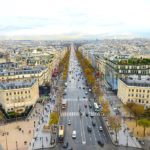Top 10 Unbelievable Facts about the Greenwich Royal Observatory

Royal Observatory Greenwich by Ethan Doyle White from Wikimedia Commons
The Royal Observatory at Greenwich has been viewing the stars for hundreds of years, making it a pioneering location in British astronomy. It was commissioned by King Charles II and its location was chosen by Sir Christopher Wren in 1675, and it is a Who’s Who of 17th Century Britain.
The Prime Meridian, an essential navigational instrument for sailors, has been housed at the Observatory since the Longitude Act of 1714. The Observatory, which is still crucial for navigation and timekeeping, is rich in intriguing data owing to its various contributions.
1. Charles II created the position of Astronomer Royal

John Michael Wright by John Michael Wright from Wikimedia Commons
But not because he designed the building. Sir Christopher Wren – most famous for designing St. Paul’s and other London landmarks after the Great Fire in 1666 – was a multitalented man.
Before his architectural career really got going, he was a professor of astronomy at Oxford University. It was in this capacity that he was selected by King Charles II to set up an observatory in London. He chose the site at Greenwich.
2. Greenwich’s Royal Observatory is notorious for losing the ball

Prime Meridian by Michal Osmenda from Wikimedia Commons
The Prime Meridian is the most recognized feature of the Royal Observatory Greenwich. Longitude 0 is represented with a longitudinal (north-south) marker. Every location on the planet might be measured in terms of how far east or west it is from the Prime Meridian.
When it came to charting the night sky, this was especially useful since different observation spots could be recorded in terms of their distance from the Prime Meridian. Because of the usage of a standard longitudinal point, it was also extremely beneficial in terms of sailing, allowing distances, hours, and routes to be efficiently charted.
Trains, factories, and worldwide enterprises could utilize Greenwich Mean Time as a universal measure of time as the industrial world took shape, implying that the globe was becoming more organized.
3. It’s the best spot in the city for stargazing
You’d think that as a time and distance marker, they’d have a great clock collection. When it comes to clocks, the Royal Observatory Greenwich does not disappoint. The list of historic clocks is long, with many of them revolutionizing the way we record, measure, and keep track of time in many sectors.
The Russian F.M. Fedchenko pendulum clock, which is claimed to be one of the most accurate in the world, is one of the highlights. The Shepherd Gate Clock, which is situated on the Observatory’s outside wall and boasts a unique 24-hour display.
4. At the Royal Observatory Greenwich, you may be confident of receiving accurate measurements
A set of Public Standards of Length may be found at the Royal Observatory Greenwich. These measures, marked out by metal pegs, specify the exact length of various imperial measuring units, such as a yard and afoot. You’re doing something wrong if your shelf doesn’t fit after you’ve measured it against the marks above.
5. Charles II created the position of Astronomer Royal

Royal Observatory Greenwich by Elliott Brown from Wikimedia Commons
King Charles II was pushed to build an observatory to help in the study of astronomy and navigation as European exploration and international trade increased. He established the job of Astronomer Royal when he established the Royal Observatory Greenwich.
The first person to be appointed to the office was John Flamsteed. Since Charles II established the office in the late 17th century, only 15 Astronomers Royal have served. You can discover everything about them on your complimentary visit to the Observatory with your London Pass.
6. Greenwich’s Royal Observatory is notorious for losing the ball
On top of Flamsteed House, one of the Observatory’s principal structures is a brilliant red Time Ball. Every day, the ball ascends to the top of the mast, starting at 12.55 p.m. and descending at 1 p.m.
It was originally dropped in 1833 and is considered one of the world’s oldest public time signalling devices. To view the brilliant red ball drop, visit the Royal Observatory in Greenwich… Arrive a few minutes before the lift-up time of 12.55 p.m. Please don’t be late. It is impatient.
7. It’s the best spot in the city for stargazing

Peter Harrison Planetarium by Mike Peel from Wikimedia Commons
While much of the astronomical research that used to be done at the Royal Observatory Greenwich is now done elsewhere, the Greenwich location remains significant in astronomy.
The Peter Harrison Planetarium, which projects images of the night sky and universe onto the planetarium’s domed top, puts on informative and entertaining astronomical programs. They also show science fiction films on occasion, projecting them onto the ceiling.
8. During your stay, you should explore the park as well as the known universe
The Observatory used to occupy a large portion of what is now Greenwich Park when it was primarily a scientific institution. The property has been transformed back into a public park now that much of the work has been completed elsewhere.
The views from the Observatory’s slope are spectacular, with the Thames taking centre stage and providing a background for the National Maritime Museum’s historic buildings.
It’s a protected viewpoint. One of Henry VIII’s (many) favourite hunting spots was previously here. A part of the park still has deer (now in a secured area to keep them safe from Big Hen).
9. The Maritime Greenwich World Heritage Site includes it
Yes, Greenwich’s Royal Observatory is a UNESCO World Heritage Site. The Maritime Greenwich World Heritage Site is a collection of attractions important to maritime history in downtown Greenwich and Greenwich Park.
The Old Royal Naval College, a Baroque masterpiece, and the Cutty Sark, the sole surviving tea clipper ship, are among them. Your London Pass grants you access to all three of these key marine destinations. So go to Greenwich as soon as possible. Captain.
10. It is the centre of the universe
For a long time, England and Britain considered themselves to be at the centre of the universe. That was (and still is) accurate in one sense. Greenwich Observatory splits the earth into western and eastern hemispheres, thanks to the Prime Meridian (the longitudinal marker we discussed before).
Every location on the planet was measured in terms of how far east or west it was from the Prime Meridian. You are straddling the east and west half of our world today, standing on each side of the divide.
The Royal Observatory has been the traditional source of the world’s Prime Meridian, Longitude 0° 0′ 0″, since the late nineteenth century. The global prime meridian separates the eastern and western hemispheres. Previously, practically every town in the world maintained its own local time.
Planning a trip to Paris ? Get ready !
These are Amazon’s best-selling travel products that you may need for coming to Paris.
Bookstore
- The best travel book : Rick Steves – Paris 2023 – Learn more here
- Fodor’s Paris 2024 – Learn more here
Travel Gear
- Venture Pal Lightweight Backpack – Learn more here
- Samsonite Winfield 2 28″ Luggage – Learn more here
- Swig Savvy’s Stainless Steel Insulated Water Bottle – Learn more here
Check Amazon’s best-seller list for the most popular travel accessories. We sometimes read this list just to find out what new travel products people are buying.










